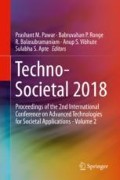Abstract
Nowadays, recognition of emotion from the speech signal is the wide spreading research topic since the speech signal is the quickest and natural approach to communicate with humans. A number of investigations have been progressed related to this topic. With the knowledge of many investigated model, this paper intends to recognize the emotions from the speech signal in a precise manner. To accomplish this, we intend to propose an adaptive learning architecture for the artificial neural network to learn the multimodal fusion of speech features. It results in a hybrid PSO-FF algorithm, which combines the features of both the PSO and FF towards training the network. The performance of the proposed recognition model has been analyzed by comparing it with the conventional methods in correspondence with varied performance measures like Accuracy, Sensitivity, Specificity, Precision, FPR, FNR, NPV, FDR, F1Score and MCC. Finally, the experimental analysis revealed that the proposed modal is 10.85% better than the conventional modals with respect to the accuracy for both the Marathi database and Benchmark database.
Access this chapter
Tax calculation will be finalised at checkout
Purchases are for personal use only
References
Arias JP, Busso C, Yoma NB (2014) Shape-based modeling of the fundamental frequency contour for emotion detection in speech. Comput Speech Lang 28(1):278–294
Bhatnagar K, Gupta S (2017) Extending the neural model to study the impact of effective area of optical fiber on laser intensity. Int J Intell Eng Sys 10:274–283
Cowie R, Cornelius RR (2003) Describing the emotional states that are expressed in speech. Speech Comm 40:5–32
Deng J, Xu X, Zhang Z, Frühholz S, Schuller B (2017) Universum autoencoder-based domain adaptation for speech emotion recognition. IEEE Signal Process Lett 24(4):500–504
Grimm M, Kroschel K, Mower E, Narayanan S (2007) Primitives-based evaluation and estimation of emotions in speech. Speech Comm 49(10–11):787–800
Kavousi-Fard A (2017) A novel probabilistic method to model the uncertainty of tidal prediction. IEEE Trans Geosci Remote Sens 55(2):828–833
Lopez-de-Ipiña K, Alonso JB, Solé-Casals J, Barroso N, Henriquez P, Faundez-Zanuy M et al (2013) On automatic diagnosis of Alzheimer’s disease based on spontaneous speech analysis and emotional temperature. Cogn Comput 7:44–55
Rong J, Li G, Chen Y-PP (2009) Acoustic feature selection for automatic emotion recognition from speech. Inf Process Manag 45(3):315–328
Shami M, Verhelst W (2007) An evaluation of the robustness of existing supervised machine learning approaches to the classification of emotions in speech. Speech Comm 49(3):201–212
Yogesh CK, Hariharan M, Ngadiran R, Adom AH, Yaacob S, Berkai C, Polat K (2017b) A new hybrid PSO assisted biogeography-based optimization for emotion and stress recognition from speech signal. Expert Syst Appl 69(March):149–158
Zong Y, Zheng W, Cui Z, Li Q (2016) Double sparse learning model for speech emotion recognition. Electron Lett 52(16):1410–1412
Author information
Authors and Affiliations
Corresponding author
Editor information
Editors and Affiliations
Rights and permissions
Copyright information
© 2020 Springer Nature Switzerland AG
About this paper
Cite this paper
Palange, L.A., Darekar, R.V. (2020). Adaptive Artificial Neural Network Based Marathi Speech Database Emotion Recognition. In: Pawar, P., Ronge, B., Balasubramaniam, R., Vibhute, A., Apte, S. (eds) Techno-Societal 2018 . Springer, Cham. https://doi.org/10.1007/978-3-030-16962-6_7
Download citation
DOI: https://doi.org/10.1007/978-3-030-16962-6_7
Published:
Publisher Name: Springer, Cham
Print ISBN: 978-3-030-16961-9
Online ISBN: 978-3-030-16962-6
eBook Packages: Intelligent Technologies and RoboticsIntelligent Technologies and Robotics (R0)

